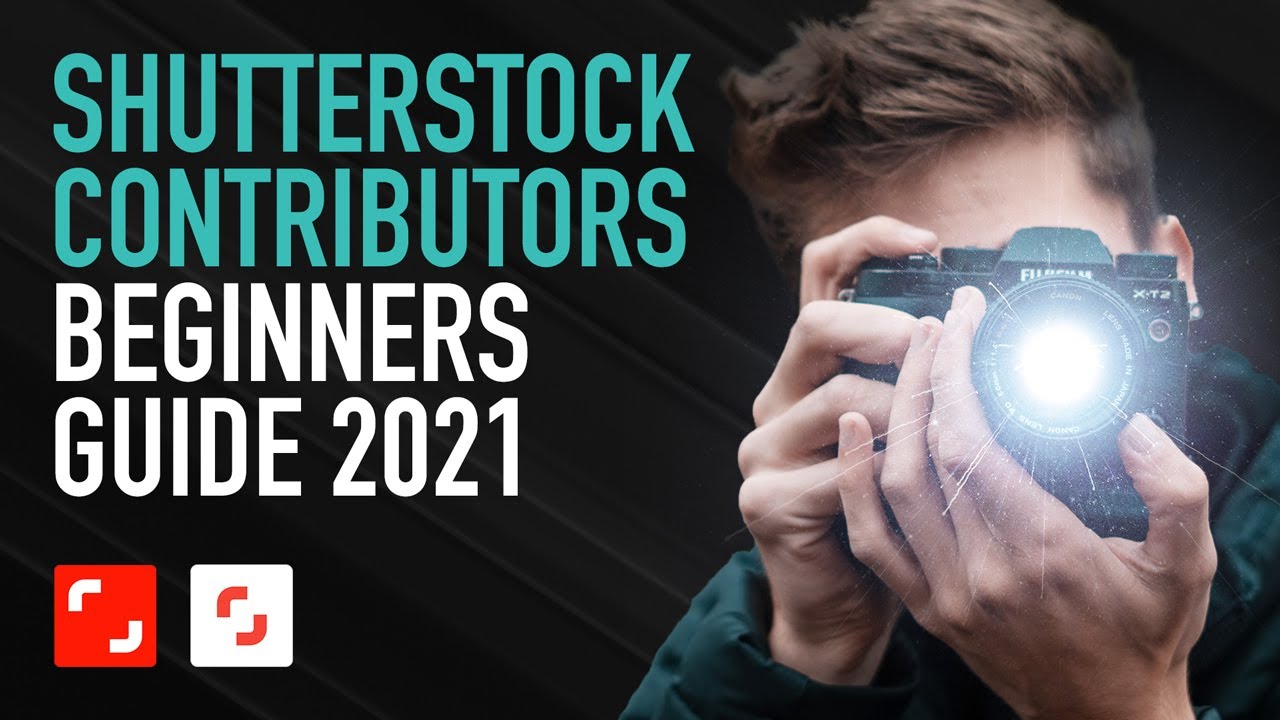Thinking about turning your photography, illustrations, or designs into a source of income? The Shutterstock Contributor Program is a fantastic way for creatives like you to showcase your work to a global audience and earn money each time someone downloads your content. You might assume you need an extensive portfolio to get started, but the truth is, even beginners with a few high-quality pieces can jump in. Whether you’re a hobbyist or just starting out, Shutterstock welcomes new contributors and offers a straightforward way to begin your journey in stock content creation. Let’s explore how you can become a contributor without having an existing portfolio ready to go!
Understanding the Requirements for New Contributors

Before diving in, it’s important to understand what Shutterstock looks for in new contributors. Don’t worry—these requirements aren’t overwhelming, and they’re designed to ensure your submissions meet quality standards. Here’s what you need to know:
- Quality Over Quantity: Shutterstock places a high emphasis on the quality of your images or designs. Even if you’re just starting out, focus on creating sharp, well-lit, and clear content. Blurry or poorly composed images are unlikely to be accepted.
- Original Content: All submissions must be original. Avoid copyrighted material or images that contain trademarks unless you have explicit permission. Your work should be unique and your own creation.
- Technical Specifications: Make sure your files are in the correct format, typically JPEG for photos and PNG for illustrations, with a minimum resolution of 4 MP. Follow Shutterstock’s guidelines to avoid rejection due to technical issues.
- Model and Property Releases: While not mandatory for all images, some categories may require releases, especially for recognizable people or private property. If you’re just starting, focus on images that don’t require releases, like landscapes or abstract designs.
- Submission Limits: When you first sign up, there’s no strict limit on how many files you can submit, but quality is key. Upload a handful of your best pieces—think of it as your introduction rather than a volume of work.
Once you understand these basics, you’re ready to start creating and submitting your content. Remember, you don’t need to have a massive portfolio before applying—just a few high-quality, original pieces that showcase your talent. The next step is to set up your account and start submitting your work with confidence!
Steps to Join Shutterstock Without an Existing Portfolio

So, you’re interested in becoming a Shutterstock contributor but don’t have an existing portfolio to showcase your work? No worries! Getting started without a portfolio is totally doable, and I’ll walk you through the essential steps to make it happen.
Step 1: Understand the Requirements
First things first, familiarize yourself with Shutterstock’s contributor guidelines. They typically look for high-quality images, original content, and technical compliance. Make sure your work adheres to their standards—this includes proper lighting, focus, and avoiding copyright infringements.
Step 2: Create a Few Sample Images
Even if you don’t have a portfolio, try creating a handful of sample images. These don’t have to be perfect, but they should be representative of what you aim to contribute. Focus on popular categories like nature, lifestyle, or abstract photography to increase your chances of acceptance.
Step 3: Sign Up as a Contributor
Head over to the Shutterstock Contributor Signup Page and fill out the registration form. It’s free to join! You’ll be asked to provide your personal details and agree to their terms. No portfolio upload is necessary at this initial stage.
Step 4: Submit Your First Files
Once registered, you’ll be prompted to upload your images. Since you’re starting without a portfolio, upload your best few samples. Make sure they are well-edited, properly tagged, and have descriptive titles. Keep the file sizes and formats in line with Shutterstock’s specifications.
Step 5: Wait for Review
After submission, Shutterstock’s review team will evaluate your images. This process can take a few days to a week. During this time, avoid submitting too many images at once—quality over quantity is key.
Step 6: Respond to Feedback
If your images are accepted, congratulations! You’re officially a contributor. If not, don’t get discouraged—review the feedback, improve your work, and try again. Remember, many successful contributors started with a few rejections.
By following these steps, you can start contributing to Shutterstock even if you’re just getting your feet wet. The key is to focus on creating quality content, adhering to guidelines, and gradually building your portfolio from your initial submissions.
Building Your Portfolio from Scratch
Now that you’re officially a Shutterstock contributor, it’s time to build a robust portfolio that attracts buyers and maximizes your earning potential. Don’t worry if you’re starting from zero; with a little planning and consistency, you’ll have a diverse collection in no time.
Start with a Niche or Theme
Focus on a specific niche or theme that excites you or aligns with your skills. Whether it’s travel, food, technology, or nature, honing in on a particular area helps you create a cohesive portfolio and appeal to targeted buyers.
Consistent Content Creation
- Set a schedule for shooting or creating new images regularly.
- Experiment with different styles, lighting, and compositions.
- Capture multiple angles and variations of your subjects.
Invest in Good Equipment
You don’t need the most expensive gear, but investing in a decent camera and editing software can significantly improve your image quality. Clear, sharp, and well-edited images tend to perform better on Shutterstock.
Focus on Quality Over Quantity
While it’s tempting to upload everything you create, remember that Shutterstock values high-quality content. Take the time to review and edit your images before uploading. Use keywording wisely—think like a buyer and include relevant, descriptive tags.
Organize Your Portfolio
| Category | Sample Content |
|---|---|
| Nature | Landscapes, wildlife, macro shots |
| People & Lifestyle | Candid shots, portraits, everyday scenes |
| Abstract & Creative | Patterns, textures, digital art |
| Objects & Still Life | Food, gadgets, decor |
Creating a well-organized portfolio makes it easier for buyers to find what they need and shows your versatility as a contributor. Remember, diversity in your content can boost your visibility and sales.
Lastly, keep learning! Watch tutorials, read the Shutterstock contributor blog, and seek feedback from fellow creators. Over time, your portfolio will grow, your skills will improve, and you’ll start earning steadily. The journey from scratch to successful contributor is all about persistence, quality, and passion. Happy creating!
Tips for Creating High-Quality Content
Alright, so you’re eager to become a Shutterstock contributor but don’t have a portfolio yet? No worries! The key to getting approved and standing out is creating high-quality, captivating content right from the start. Here are some tips to help you produce images and videos that catch the eye of reviewers and future buyers:
Understand the Market Demand
Before you start snapping photos or filming videos, do a little research. Browse Shutterstock to see what types of images are popular. Are people searching for business-themed photos, nature shots, lifestyle images, or something else? Focus on creating content that aligns with current trends and needs.
Invest in Good Equipment
You don’t need a professional camera, but decent equipment can make a big difference. Clear, sharp images with good lighting are more likely to be accepted. Natural light is your friend, and using a tripod can help keep shots steady. Remember, quality is king!
Pay Attention to Composition and Lighting
Think about how your images are framed. Use the rule of thirds, avoid cluttered backgrounds, and ensure your subject stands out. Proper lighting enhances the mood and clarity of your photos. Take time to experiment until you get the perfect shot.
Keep Your Content Original and Authentic
While it’s tempting to replicate popular images, originality helps you stand out. Capture unique perspectives, new ideas, or fresh takes on common themes. Authenticity resonates with viewers and buyers alike.
Follow Technical Guidelines
- Resolution: Upload images at 4 MP or higher.
- Format: Use JPEG for images and standard formats for videos.
- File Size: Keep files under Shutterstock’s maximum limits but high enough quality.
- No Watermarks or Logos: Ensure your content is clean and professional-looking.
Be Consistent and Patient
Building a portfolio takes time. Upload regularly, learn from feedback, and keep refining your skills. Even if you’re just starting out, persistence pays off!
Submitting Your Work and Getting Approved
Now that you’ve created some high-quality content, it’s time to submit it to Shutterstock. The approval process is straightforward but can be competitive, so follow these steps to improve your chances of success:
Create an Account and Read the Guidelines
First, sign up as a contributor on Shutterstock’s website. Once registered, take the time to thoroughly read their contributor guidelines. Knowing what they look for will help you tailor your submissions and avoid common pitfalls.
Prepare Your Files Carefully
Make sure each file meets the technical specifications we discussed earlier. Use descriptive, relevant filenames and keywords—these are crucial for discoverability. For example, instead of “IMG1234.jpg,” use “sunset-mountains-hiking.jpg.”
Use Accurate and Relevant Keywords
When uploading, add detailed keywords and categories. Think about what a buyer might search for. Don’t overstuff keywords, but be comprehensive enough to increase your content’s visibility.
Submit Your Content in Batches
Start with a manageable number of images or videos—say, 5 to 10 at a time. This allows you to focus on quality over quantity and makes it easier to monitor your acceptance rate.
Be Patient and Open to Feedback
The review process usually takes a few days, but it can be longer if your content needs revisions. If your submissions are rejected, don’t get discouraged. Carefully review the feedback, learn from it, and try again. Improving your skills and understanding Shutterstock’s standards is part of the journey.
Keep Uploading and Improving
The more high-quality content you submit, the better your chances of getting approved and earning royalties. Stay consistent, keep learning, and adapt to market trends. Remember, every contributor starts somewhere, and persistence is key!
Maximizing Your Earnings as a Shutterstock Contributor
So, you’ve started your journey as a Shutterstock contributor—congratulations! Now, let’s talk about how you can make the most out of your efforts and maximize your earnings. It’s not just about uploading images; it’s about smart strategies to boost your income and build a sustainable income stream.
First, focus on quality over quantity. Shutterstock values high-quality, unique images that meet their standards. Before uploading, make sure your photos are sharp, well-lit, and properly edited. Avoid overly generic or overused concepts—aim for fresh, eye-catching content that stands out.
Next, understand the importance of keywording. Accurate, relevant keywords help your images get discovered. Use a mix of popular and niche keywords, and think about what buyers might search for. Don’t stuff keywords—be natural and precise.
Here are some additional tips to boost your earnings:
- Specialize in a niche: Developing expertise in a specific area—like food, travel, or technology—can help you become a go-to contributor for those topics.
- Create collections: Group related images into collections or portfolios. This encourages buyers to explore more of your work, increasing the chance of sales.
- Stay consistent: Regular uploads keep your portfolio active and improve your visibility on the platform.
- Participate in promotions: Shutterstock often runs promotional campaigns or contests. Engaging with these can increase exposure and sales.
- Monitor your analytics: Use Shutterstock’s contributor dashboard to see what’s selling. Focus on producing more of what works.
Remember, building a steady income takes time. Be patient, keep improving your skills, and stay committed to uploading high-quality, well-tagged images. Over time, your portfolio will grow, and so will your earnings!
Additional Resources and Support for New Contributors
Starting out can feel overwhelming, but don’t worry—you’re not alone. Shutterstock offers a variety of resources and support options to help new contributors succeed and grow their portfolios.
First up, check out the Shutterstock Contributor Blog. It’s packed with tips, success stories, and updates on platform features that can help you stay informed and inspired.
Next, consider exploring their Help Center. It provides detailed guides on topics like uploading, keywording, licensing, and payments. Whether you’re curious about technical details or best practices, it’s a great go-to resource.
Additionally, Shutterstock offers webinars and tutorials. These live or recorded sessions cover everything from basic account setup to advanced marketing strategies. Participating can give you insider insights and connect you with the community.
If you’re looking for more personalized support, join online communities and forums. Platforms like Reddit, Facebook groups, or dedicated photography forums often have active Shutterstock contributor communities. Sharing experiences and asking questions here can be incredibly helpful.
Lastly, keep an eye out for contests and challenges hosted by Shutterstock. They’re a fun way to motivate yourself, learn new skills, and sometimes win prizes or recognition that can boost your profile.
Remember, becoming a successful contributor isn’t just about uploading images—it’s about learning, adapting, and engaging with the community. Take advantage of these resources, stay curious, and don’t hesitate to reach out for support when needed. With persistence and the right tools, you’ll find your stride and grow your Shutterstock earnings in no time!


